UNESCO World Heritage Site of Somanathapur
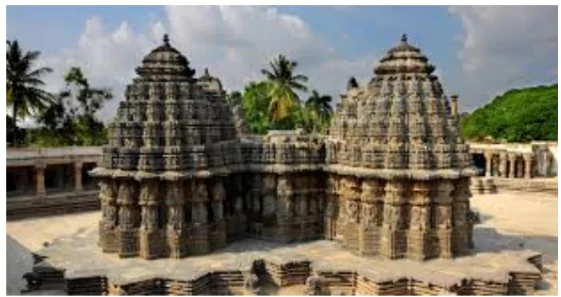
|
- Recently, the Tourism Department in Karnataka has plans to promote the UNESCO World Heritage Site of Somanathapura as part of Mysore tourism circuit.
Hoysala Temples:
- About: Constructed in the 12th and 13th centuries, the trio of temples included in the UNESCO list are notable not only for demonstrating the exceptional skill of their builders but also for narrating the political history that shaped their construction.
- Chennakeshava Temple: The Chennakeshava Temple, devoted to Lord Vishnu, was consecrated around 1117 AD by the formidable Hoysala king Vishnuvardhana to celebrate his triumphs over the Cholas. Therefore, it is also referred to as the Vijaya Narayana Temple.
- Kesava Temple: The Kesava Temple, also a Vaishnava shrine, was built in Somanathapura in 1268 by Somanatha, a general under Hoysala King Narasimha III.
- Shaped like a 16-point star, it houses three shrines dedicated to Keshava (though the statue is now missing), Janardhana, and Venugopala.
- Hoysaleswara Temple: The Hoysaleswara Temple, considered the largest Shiva temple constructed by the Hoysalas, dates back to the 12th century.
UNESCO World Heritage Sites:
- About: A World Heritage Site (WHS) is a landmark or area that receives legal protection under an international convention overseen by UNESCO, established through the UNESCO World Heritage Convention in 1972.
- Significance: UNESCO designates these sites for their cultural, historical, scientific, or other forms of significance. Classified as cultural, natural, or mixed heritage (meeting both cultural and natural criteria), these sites are considered of outstanding value to humanity.
- Criteria: Criteria for selection as a World Heritage Site (WHS) include uniqueness, geographical and historical significance, and special cultural or physical importance.
- Examples of WHSs encompass ancient ruins, historical structures, cities, deserts, forests, islands, lakes, monuments, mountains, and wilderness areas.
- Management: UNESCO designates these sites as protected areas, managed and maintained by the international World Heritage Program under the UNESCO World Heritage Committee.
|
Flowers used in Jagannath Temple
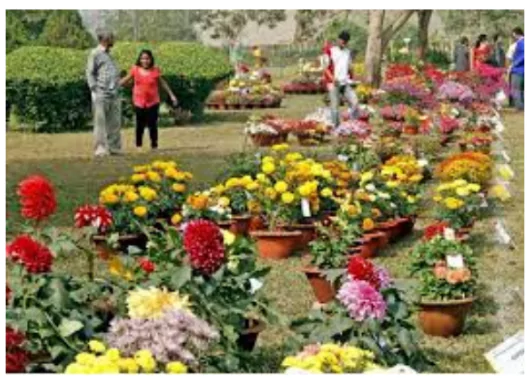
|
Recently, the National Botanical Research Institute, a CSIR institute, conducted scientific research to preserve and cultivate flowers used in temple rituals.
Flowers used in the Temple:
- Cultivation of Sacred Plants: Planting materials of marigold, tuberose, tulsi, jasmine, davana (Dayana) were supplied and introduced in the Matitota garden of the temple for raising these plants for their use for worshiping purposes.
- Namoh 108 variety of lotus, developed by CSIR-NBRI, was also planted in the Koili Baikuntha garden of the temple.
- Decoration for Deities: Deities are decorated with floral ornaments such as Adhara, Jhumpa, Chandrika, Tilaka, Hruda Padaka, Kara Pallav, Guna, Gava and a number of garlands, some of these are inter-mixed with Tulsi leaves.
|
International Solar Alliance

|
- Recently, Paraguay has become the 100th country to join the International Solar Alliance (ISA) as a full member.
International Solar Alliance
- About: It is an initiative jointly launched by India and France in 2015 on the sidelines of COP-21 of UNFCCC in Paris.
- Origin: It was officially established on 6 December 2017, on the entry into force of the Framework Agreement.
- Criteria: The membership is open to those solar resource-rich States, which lie fully or partially between the Tropic of Cancer and the Tropic of Capricorn, and are members of the United Nations
- Members: The alliance has gained significant traction since its inception, with 119 countries now signatories to the ISA Framework Agreement.
- Of these, 100 have completed the ratification process to become full members, with Spain joining as the 99th member
- Aim: The ISA’s primary goal is to contribute to the implementation of the Paris Climate Agreement through rapid and massive deployment of solar energy technologies.
- This collaborative effort is seen as crucial in the global fight against climate change and the push towards renewable energy sources.
|
Diabetes Test
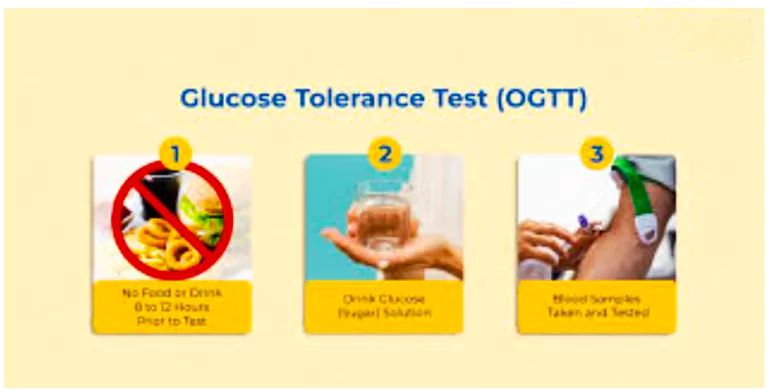
|
- Researchers from India, London, and Africa propose replacing the oral glucose tolerance test (OGTT) for diagnosing gestational diabetes with a point-of-care HbA1c test.
Oral Glucose Tolerance Test:
- About: An oral glucose tolerance test may be used to confirm a diagnosis of diabetes mellitus, although it is more usual simply to measure fasting blood glucose and free fatty acids.
- Basis:The test is based on measuring how the body deals with a glucose load.
- Procedure: The person fasts overnight and in the morning is given a fixed dose of glucose, usually in the form of a sweet drink.
- Blood samples are taken at 30-minute intervals for 2 hours, and both glucose and insulin concentrations are measured.
Hemoglobin A1C (HbA1C) Test:
- About: It is widely employed to diagnose pre-diabetes and both type 1 and type 2 diabetes, as well as to aid in diabetes management.
- This test is also referred to as the glycated hemoglobin or glycosylated hemoglobin test.
- Hemoglobin, found in red blood cells, transports oxygen from the lungs throughout the body.
- Objective: This crucial blood test provides valuable insight into the effectiveness of diabetes control.
- Procedure: Sugar from food enters in the bloodstream and binds to hemoglobin in red blood cells, which transport oxygen throughout the body.
- The HbA1C test measures the percentage of hemoglobin that is glycated, providing a crucial indicator of diabetes and pre-diabetes management.
|
Bhuvan Panchayat geoportal 4.0
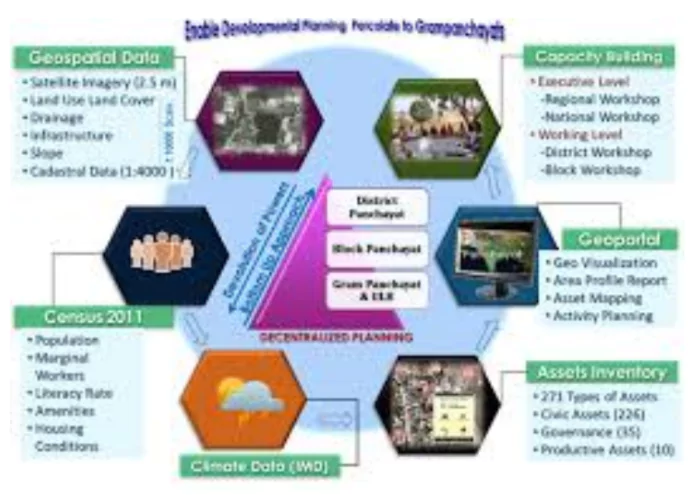
|
- The Union Minister of State (Independent Charge) for Science and Technology will introduce two new Geoportals: Bhuvan Panchayat (Version 4.0) and the National Database for Emergency Management (NDEM Version 5.0).
Bhuvan Panchayat geoportal 4.0:
- About: This online platform provides geospatial data and services to integrate space-based information into governance and research, supporting spatial planning down to the Gram Panchayat level.
- Functions: Developed by NRSC, ISRO, this WebGIS platform enables visualization, analysis, and sharing of web map services (WMS) for all thematic data products generated at 1:10k scale under the Space-based Information Support for Decentralized Planning (SISDP) project.
National Database for Emergency Management (NDEM) portal:
- About: It offers a comprehensive, structured, multi-scale geospatial database covering the entire country.
- This database supports situational assessment and facilitates effective decision-making during disasters and emergency situations.
- Function: It serves as a national-level geoportal that integrates space-based information with decision support tools and services from disaster forecasting organizations.
- This integration enhances preparedness and addresses all phases of natural disasters, contributing to effective Disaster Risk Reduction across the country.
- It will also serve as a Disaster Recovery and Data Provider node for the Integrated Control Room for Emergency Response (ICR-ER) being established by the Ministry of Home Affairs (MHA) in New Delhi.
|
Microwave Obscurant Chaff Rocket (MR-MOCR)
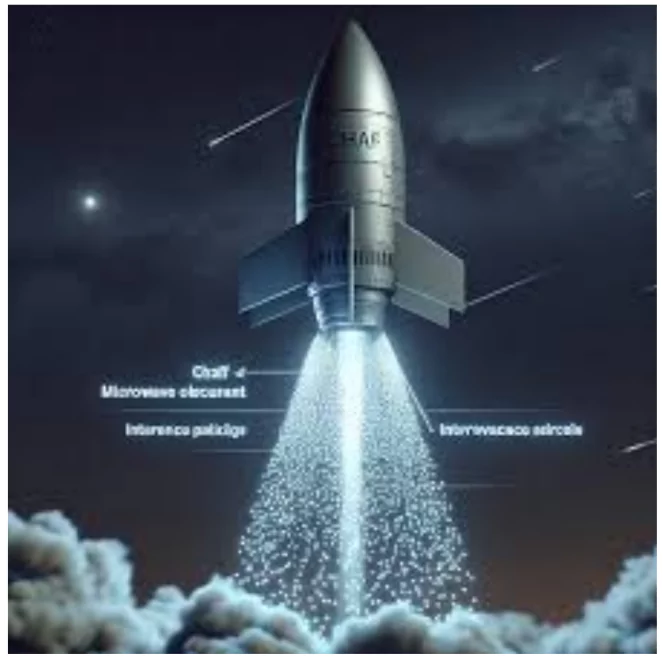
|
- Recently, the Defence Research and Development Organisation (DRDO) delivered the Medium Range-Microwave Obscurant Chaff Rocket (MR-MOCR) to the Indian Navy.
Medium Range-Microwave Obscurant Chaff Rocket (MR-MOCR):
- About: Microwave Obscurant Chaff (MOC) is an advanced technology developed by DRDO’s Defence Laboratory, Jodhpur. It disrupts radar signals and forms a microwave shield around platforms and assets, minimising radar detection.
- A special type of fibers, with diameters of a few micrometers and distinctive microwave obscuration properties, has been incorporated into the medium-range chaff rocket.
- Functioning: Upon firing, the rocket disperses a microwave obscurant cloud in space, covering a substantial area with sufficient persistence. This cloud effectively shields against hostile threats equipped with Radio Frequency seekers.
- Development: DRDO has independently developed three versions of this essential technology: the Short Range Chaff Rocket (SRCR), Medium Range Chaff Rocket (MRCR), and Long Range Chaff Rocket (LRCR).
- Phases: In Phase-I trials, the MR-MOCR was successfully tested from Indian Navy ships, showing effective MOC cloud deployment and persistence in space.
- During Phase-II trials, the Indian Navy demonstrated and approved a 90 percent reduction in the Radar Cross Section (RCS) of an aerial target.
|
![]() 29 Jun 2024
29 Jun 2024
